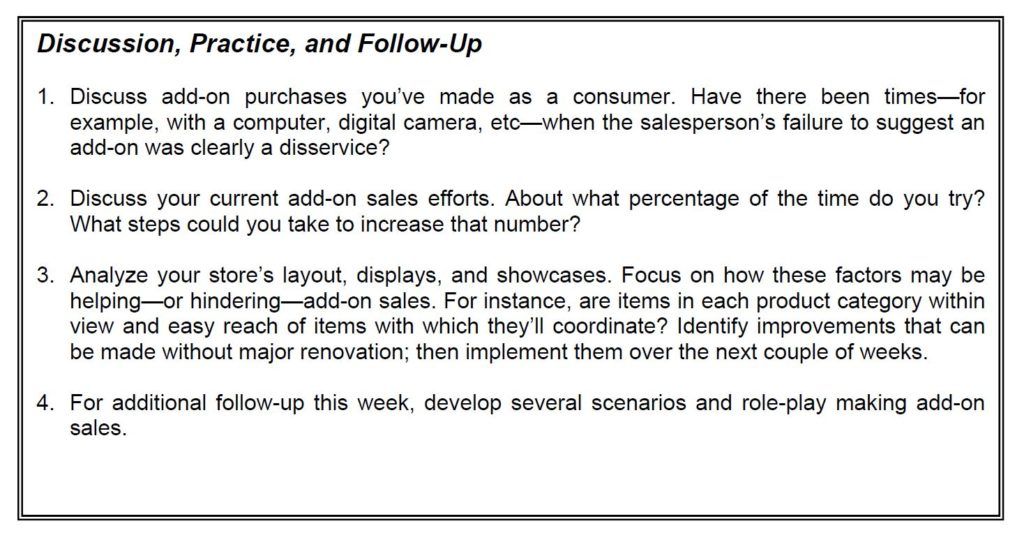Making Add-On Sales
Article provided for The Plumb Club by Kate Peterson, PC Performance Concepts

The conventional order of steps in the selling process begins with a greeting and goes through rapport building, profiling, presenting, and closing.
However, the process doesn’t—or shouldn’t—end with closing the sale. If you want to reach your full potential as a fine jewelry sales professional, there are two more steps you need to learn to take. The first one is making add-on sales.
Many jewelry associates are so glad when they manage to close one sale that they don’t even think about—much less try to provide—anything else the customer might need or want. But add-ons are common in most retail product categories. Take furniture and clothing, for example: If you’ve just bought a new couch, you probably need new end tables and lamps to go with it. When men buy suits, they usually buy shirts and ties as well. Bags and shoes are among the frequent add-ons for women’s apparel.

Kate Peterson
If other retailers routinely make add-ons, why don’t jewelry professionals? Reasons include fear of rejection, reluctance to come across as pushy, or just plain relief. On close examination, however, none of these reasons is valid. When you recognize that exceptional customer service means customers’ needs and desires are met in ways that exceed their expectations every time they enter your store, add-on sales are part of the package.
Try thinking of it this way: You’re doing customer service by suggesting further possibilities. An additional item might complete the look a customer is trying to achieve or the statement she’s trying to make. With holidays and personal events like birthdays and anniversaries on every calendar, another jewelry-buying occasion is almost specific to be coming soon. What’s more, the momentum of the interaction is in your favor. You’ve established rapport. The customer is in buying mode. She’s feeling great about the item she just bought. She’s already in the store and standing right in front of you!
Successful add-on sales typically occur immediately after the first item is closed, but laying the foundation early in the presentation is essential. An excellent way to do this is by pointing out a piece that matches or coordinates with the jewelry you’re presenting. This only takes a moment. After that, you can concentrate on the first sale. Then, return to your add-on suggestion once the customer has made the initial purchase decision.
For example, adding earrings to a necklace is natural and straightforward: “The solitaire pendant you’ve chosen is truly stunning. …What earrings are you planning to wear with it? … You know, we have these dazzling studs that would be the perfect complement. Take a look at them.”
There are countless scenarios for add-ons. A young man who’s just purchased an engagement ring will probably appreciate your recommendations for a wedding present to give his bride on the big day. A husband who has selected an expensive gift for his upcoming anniversary may respond favorably if you urge him to splurge a little on himself.
Another approach suggests add-ons that could be used as clever “packaging.” You might pick something from your giftware department—a beautiful crystal vase or an elegant jewelry box—that can become part of the gift presentation.
Repair customers are excellent candidates for add-on sales. Since repair is one of the most frequent reasons for visiting a jewelry store, you’ll also likely have many opportunities. You have to focus on the immediate need first, but after take-in, you can invite the customer to look at jewelry that coordinates with the piece she’s having repaired. Following delivery, you can encourage her to go ahead and enjoy owning the additional item (or items).
Of course, you won’t always be successful in your add-on attempts. But you certainly won’t make add-on sales if you don’t try. At the very least, every customer you serve should leave your store with ideas and inspirations for future purchases.
